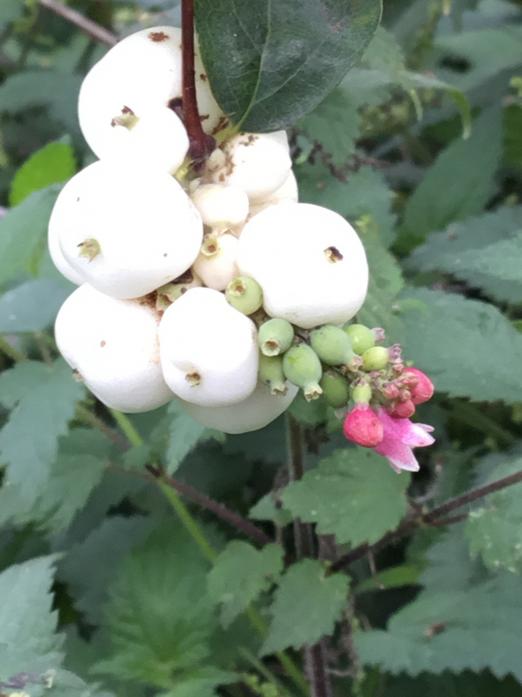
Snowberry (Symphoricarpos albus, Lady Balls, Ghostberry)
SNOWBERRY (above) is not a native plant to Europe but originates on the west coast of America, where it is found growing from Colorado northwards, as far as Alaska, and this is a climatic distribution that would also seem to suit most of Britain very well. And indeed it does.
Since its introduction in 1817, it has been planted widely, and although it does not readily spread by seed, it has nevertheless colonised relentlessly. Its success is largely due to its tolerance of most soil conditions and variety of light and shade.
Although generally found growing as bushes, the plants can reach ten feet in height. The plant spreads underground and produces many slender erect stems, soon creating a thicket. The leaves are about two inches across, and ovate to almost round. The leaves on the young suckers are lobed and are a dull green with an almost suede-like underside.
The small flowers are tubular, and about a quarter inch in diameter. They are white with pink tinges, and have a hairy throat. The familiar berry, the snowberry, is over half an inch in diameter, globose and white, and children can vouch that, when stamped on, they give a satisfactory “pop”. The flowers are pollinated by bees, wasps and syrphids (hoverflies), and the plants are therefore popular in wildlife gardens.
Because of its relatively recent introduction to Europe, snowberry doesn't feature in the herbals, and so not much is known about the medicinal uses of the berries. Although they are edible, some people react badly to them, so it is not recommended to eat them – definitely unless cooked and probably not at all! Some native Americans have uses for the berries as they contain saponins, which are thought to be useful in the treatment of cancers and for boosting the immune system. Here, the plant is used for hedging, as a garden ornamental, for ground cover, and as cover for young game birds.
And the name “Lady Balls”? According to Richard Mabey, in Flora Britannica, this intriguing appellation in fact refers only to the custom in Shropshire where, for later use, women stored lard in pigs’ bladders as little balls in a similar shape to the snowberry.
Dr Richard Warren is a botanist from Barnard Castle





